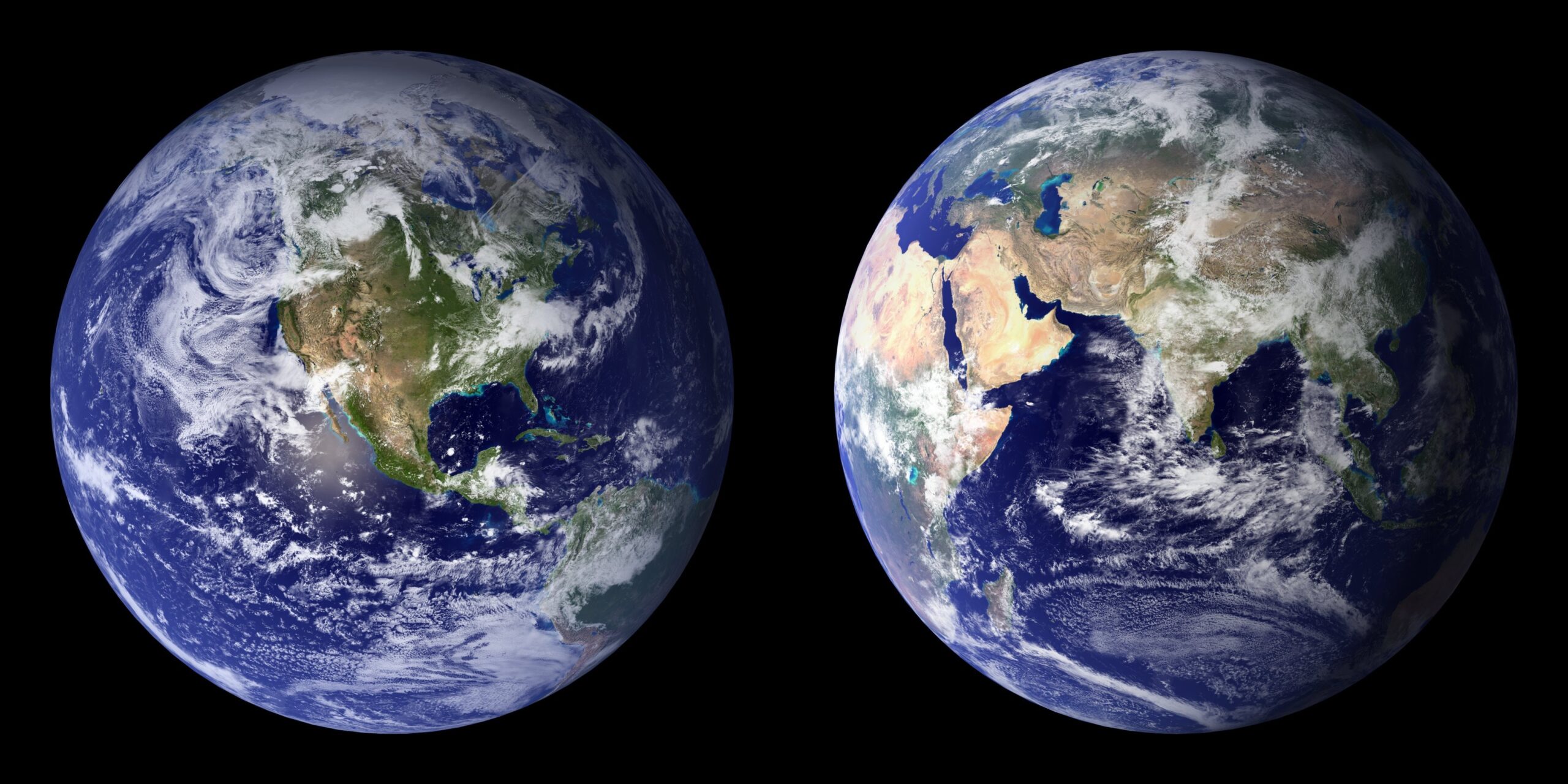Massive Hunks of Another Planet Are Inside Earth, Say Scientists
Perhaps we were the aliens all along ...

There’s a planet inside our planet. And it’s very very big. That’s what researchers from Arizona State University are theorizing. How these continentent-sized pieces of another world got there, what that has to do with the moon, and how scientists used geology and earthquakes to make this hypothesis is a very cool story, and it begins with two planets. Two relatively new and very hot planets.
The current prevalent theory about the creation of the moon is that around 4.5 billion years ago it wasn’t just earth in the “goldilocks” zone orbiting our sun, but also a second, smaller planet called Theia was there, sharing an intersecting orbit with Earth. And what’s inevitable with intersecting orbits is that they will eventually … intersect. Which in this case meant that when Theia and Earth smashed together, these planets were molten at the time, surfaces melting with volcanic energy and activity, and so Earth essentially absorbed a lot of the smaller Theia and the debris from the impact entered orbit around the new single planet and eventually formed the moon.
Theia by the way is named for the Greek Titaness/Goddess who was the mother of the titans Helios and Selene, gods of the sun and the moon respectively, because this impact literally gave birth to the moon.
This is what’s called the Giant Impact Hypothesis, and was proposed in the 1970s after the Apollo missions to the moon revealed that the composition of moon rocks wasn’t very different from Earth rocks, and gave birth to an entirely new theory of how the moon was formed. But it remains a theory. However, the newest chapter in the story may offer more proof that Theia still exists within the eath’s mantle.
A new study was presented this week at the 52nd Lunar and Planetary Science Conference, led by Qian Yuan, a geodynamics researcher with Arizona State University. Yuan and his fellow researchers propose that remnants of Theia reside 1,000 to 2,000 miles beneath the mantle of Earth under West Africa and the Pacific Ocean. These layers are the size of continents and we know they are there because of how they interact with the rest of the planet in the form of earthquakes and geologic movement.
Seismologists have been studying these layers separately from the Giant Impact Hypothesis for many decades because they have the unique properties of essentially slowing down the seismic waves from earthquakes and plate movement. Scientists call these plates large low-shear velocity provinces or LLSVPs. These things are huge and contain about 6 times the mass of the moon and have fascinated seismologists for a while.
Yuan theorizes that the LLSVPs behave differently because they are literally different from the rest of earth on a chemical level, the same way lunar rocks are different. Think of it like ripples traveling at different speeds through two different liquids. Except on a literal global scale.
Yuan came up with the hypothesis after studying the Giant Impact Hypothesis at the same time as he was studying the LLSVPs. His professor said that one of the weaknesses of the Giant Impact Hypothesis was that there were no identifiable pieces of Theia on earth. “That really struck me, because at the time I was studying LLSVPs,” Yuan told Vice. “I knew that people were arguing that LLSVPs could be even older than the age of the Moon.”
He explained: “When I got back to my office, I just did a very easy calculation where I compared the size of the LLSVPs to the mantle of Mars, because Theia was believed to be very similar to Mars. The total mass of the Moon, together with the LLSVPs, is almost perfectly matched with Mars’ mantle.” Yuan went on from there, comparing for instance how the moon is about two to three percent denser than Earth’s mantle and, you guessed it, the LLSVPs are also two to three percent denser than the rest of the mantle.
This is all theoretical at the moment, but samples from the Moon’s mantle compared with some from LLSVPs might prove this theory correct, and that’s just a matter of time and a quick trip to the moon. But it’s incredible to think that part of another planet is within ours and that we can see the remnants of a collision from billions of years ago when we look up to the sky.
(via Observer, image: Pexels)
Want more stories like this? Become a subscriber and support the site!
—The Mary Sue has a strict comment policy that forbids, but is not limited to, personal insults toward anyone, hate speech, and trolling.—
Have a tip we should know? tips@themarysue.com